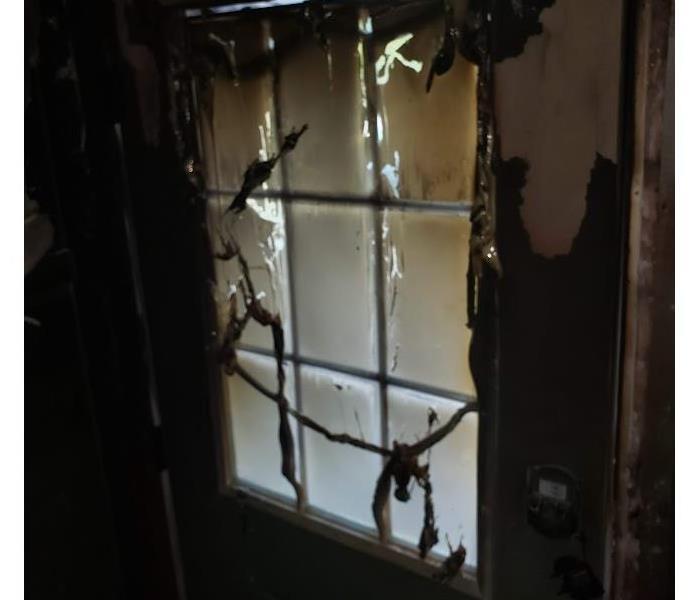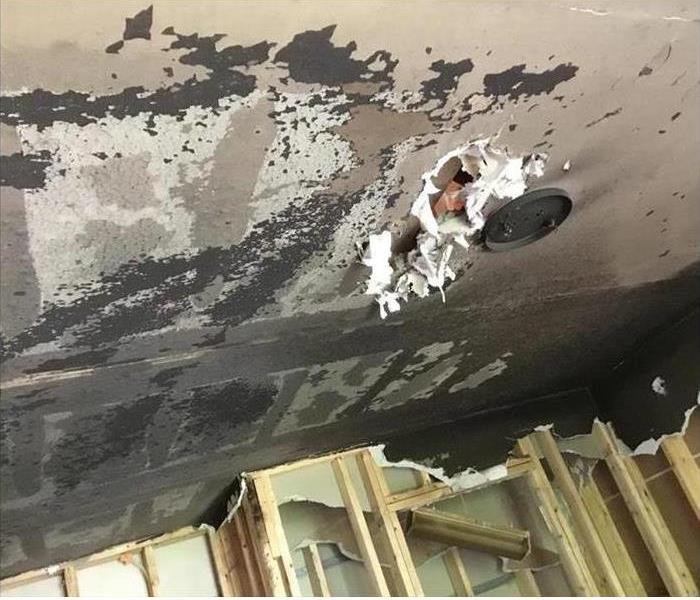Fire Prevention
1/24/2025 (Permalink)
 Fire prevention
Fire prevention
Fire Prevention Week and Beyond.
The weather is turning colder here in the Northeast!
We have to remain vigilant with our fire safety. Here are some tips on staying on top of all things fire related.
Protect Your Family with Smoke Detectors
Installing and maintaining smoke detectors is still the most important step you can take to protect your family from fire death or injury.
The detector should be no more than ten years old. You can check the date on the back of the unit. Test the batteries monthly, and replace often. Install them in all bedrooms, hallways outside bedrooms, and on each level of your home.
There are two types of smoke detectors: photoelectric and ionization. Photoelectric works better with slower, smoldering fires, while the ionization type is more suited to faster, flaming fires. Most experts recommend that you have both in your home.
Have an Escape Plan:
Take the time to plan an escape route for everyone in the home, designating a meet up spot outside.
The key to any escape plan is practice!
Kids love games and challenges. Record the time it takes everyone to make it from their beds to the meetup spot, and then try to beat that time.
The more often you practice, the more likely your children are to follow the plan, rather than freeze in panic or confusion when every second counts. Set your calendar to remind you to practice monthly.
Fire Extinguishers are a must!
Two out of five home fires begin in the kitchen. Never leave a kitchen when food is cooking, especially on the burners. ALWAYS keep a fire extinguisher close by!
Have your chimneys cleaned regularly, and be very careful with portable space heaters. Make sure they are several feet away from drapes, clothing, or anything that could catch fire.
Never smoke in bed or while lying down.
Inspect your appliance cords. If any are torn, ripped, or damaged in any way, replace them immediately. If a cord or plug ever feels hot, unplug it.
Prevention is the key to your safety
Fires during Construction and Renovations
9/21/2022 (Permalink)
 Fire at construction site
Fire at construction site
The days are longer and the weather is warmer, it's time get those construction and renovation projects underway!
Fires in structures under construction are more common than you may think.
According to the NFPA fire departments responded to an average of 3,840 fires of structures that were under construction and 2,580 fires in structures that were under major renovations per year between 2013-2017.
The cost annually for this is $304 million in direct property damage and three of every four fires in structures under construction involved residential properties.
Fire at a construction site is bound to endanger the lives of workers and anyone else on site. A fire at the site can also damage the structure and destruction of machinery and materials; ultimately putting the job at a stop and delaying the whole project.
It is imperative that every project has a clearly laid out fire protection plan and a project manager/construction manager to make sure that the plan is in place and that every one is aware of the plan and point of contact.
Fires at construction sites can start for many reasons and it is important to know fire types and how to handle each one.
Class A fires occur in wood, rubber, paper,cloth and most plastics. The most effective type of extinguishing agent is one using water, or solutions containing large concentrations of water,because the ‘‘quenching-cooling’’ effect reduces the temperature of the burning material below its ignition temperature. Fire extinguishers suitable for this type of fire are designated with a classification of “A” on the label
Class B fires occur in flammable or combustible liquids, such as petroleum products and greases.
A “blanketingsmothering” effect of an agent that excludes oxygen or inhibits the chemical chain reaction is most effective. Extinguishers labeled “Class B” employ carbon dioxide, dry chemical, Halon or foam.
Class C fires involve electrical equipment. The extinguishing agent must be non-conductive. Carbon dioxide, dry chemical and Halon are the normal types used for electrical fires.
Class D fires involve combustible metals such as aluminum, magnesium, zirconium and titanium. The use of water and some other conventional types of extinguishing agents are ineffective and may cause a violent reaction. These fires can be extinguished with specially prepared agents. Where this hazard exists, extinguishing agents with a D-class rating should be provided. All on-site fire extinguishers should be serviced and inspected.
According to the NSC The woodworking area should be set up in a remote area of the project.
Where possible, dust-collecting apparatus should be installed for power equipment. Dust, scraps and refuse should be removed regularly and properly disposed of. Smoking should be prohibited in the area.
Cutting and welding sparks cause more
construction fires than any other ignition source.
The person responsible for fire safety should implement fire protection systems and ensure
adequate precautions are taken.
The NSC also recommends to expedite the installation of automatic sprinklers.
Underground mains, hydrants and a source of water should be provided in the earliest stages of construction. The goal should be to get sprinklers in service ahead of combustible occupancy and immediately following combustible construction.
Making sure that all local codes are being implemented and followed is imperative to a safe and effective worksite.
SERVPRO of Claremont, Sunapee, Newfound Lake welcomes any and all questions about fire safety! Give us a call today at 603-298-6942

 24/7 Emergency Service
24/7 Emergency Service

